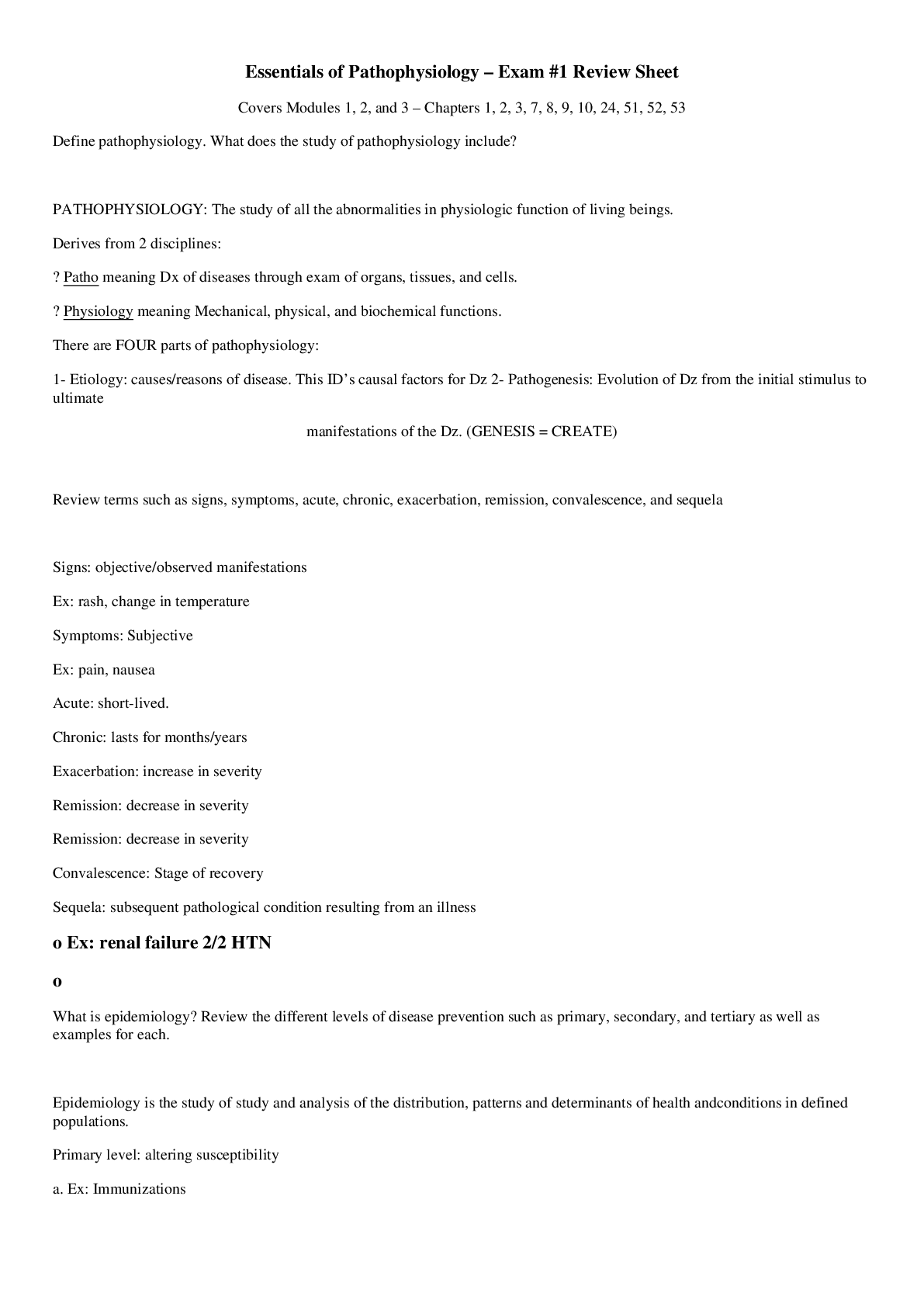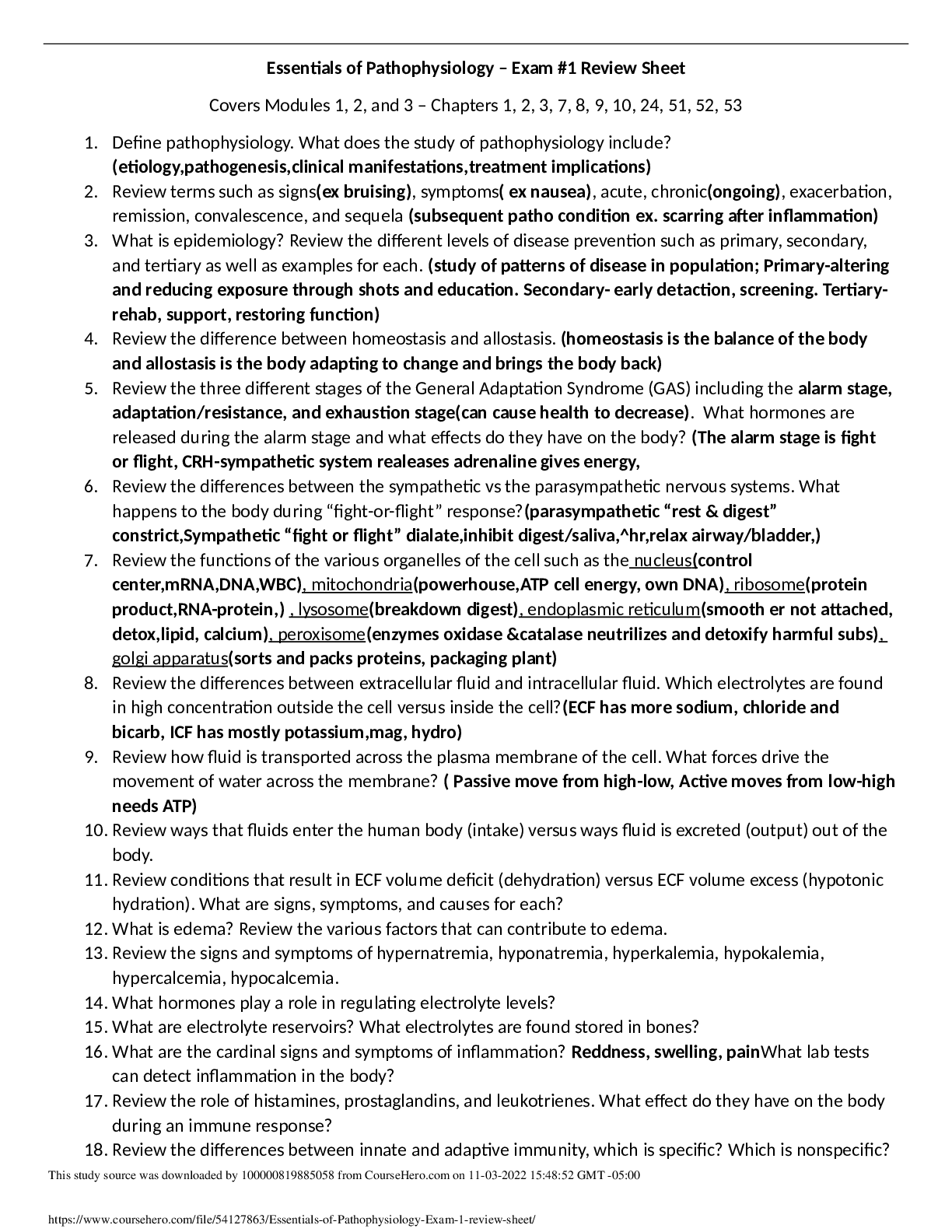Pathophysiology > STUDY GUIDE > NUR 2063 Pathophysiology - Exam 2-Module 4 - Study Guide _Spring 2020 (All)
NUR 2063 Pathophysiology - Exam 2-Module 4 - Study Guide _Spring 2020
Document Content and Description Below
Pathophysiology – Exam 2 Study Guide Module 4 Clinical manifestations – appendicitis o Right, lower abdominal pain, nausea, occasional diarrhea Cause of pseudomembranous colitis and n... onpharmacologic treatmentso (Often called antibiotic associated colitis) Acute inflammation and necrosis of the large intestine caused by Clostridium difficile. Exposure to antibiotics is the major factor predisposing to the development of this disorder. Stop the affecting antibiotic. Treat ischemia, fecal transplant, colectomy Clinical manifestations – cholecystitiso Acute: Inflammation of the gallbladder wall. o Chronic- inflammation of the gallbladder wall attributed to persistent lowgrade irritation from gallstones or recurrent attacks of acute cholecystitis. Cause of Helicobacter pylori (H. pylori)- o Transmission person to person, fecal-oral route, reservoir in water sources. H. pylori often causes peptic ulcer disease Clinical manifestations – gastric carcinoma o Early- none. o Advanced- anorexia, weight loss and GI bleed Causes of gastroenteritis due to Salmonella o Consumption of raw or undercooked chicken/eggs o Diarrhea, N/V, abdominal pain Complication of perforated gallbladdero Sepsis. o Rare complication of acute cholecystitis Cause of jaundice and disease associated with jaundiceo Elevated levels of bilirubin o Caused by a buildup of bilirubin, which is a waste product in blood. An inflamed liver or obstructed bile duct can cause jaundice. Diseases associated: infections of the liver from a virus (Hepatitis), overuse to Tylenol. Define the following terms: dysphagia; occult bloodo Dysphagia: difficult or painful swallowing o Occult blood (cause by polyps) blood you can’t see with the naked eye, FOBT (fecal occult blood test). Means there is usually bleeding somewhere in the digestive tract. What should patients with newly diagnosed pancreatitis avoid? o Alcohol What causes greenish-yellow emesis? o Bile, caused by vomiting on an empty stomach, or bile reflux. Most frequent location of peptic ulcerso Proximal Duodenum What types of hepatitis increase the risk of hepatocellular carcinoma? o Hep B and C Clinical manifestations of chronic gastritis o Upper abdominal pain o Indigestion o Bloating o N/V o Weight loss/loss of appetite o Hematemesis may occur bc of damage to the gastric epithelial mucosa [Show More]
Last updated: 1 year ago
Preview 1 out of 9 pages
Instant download
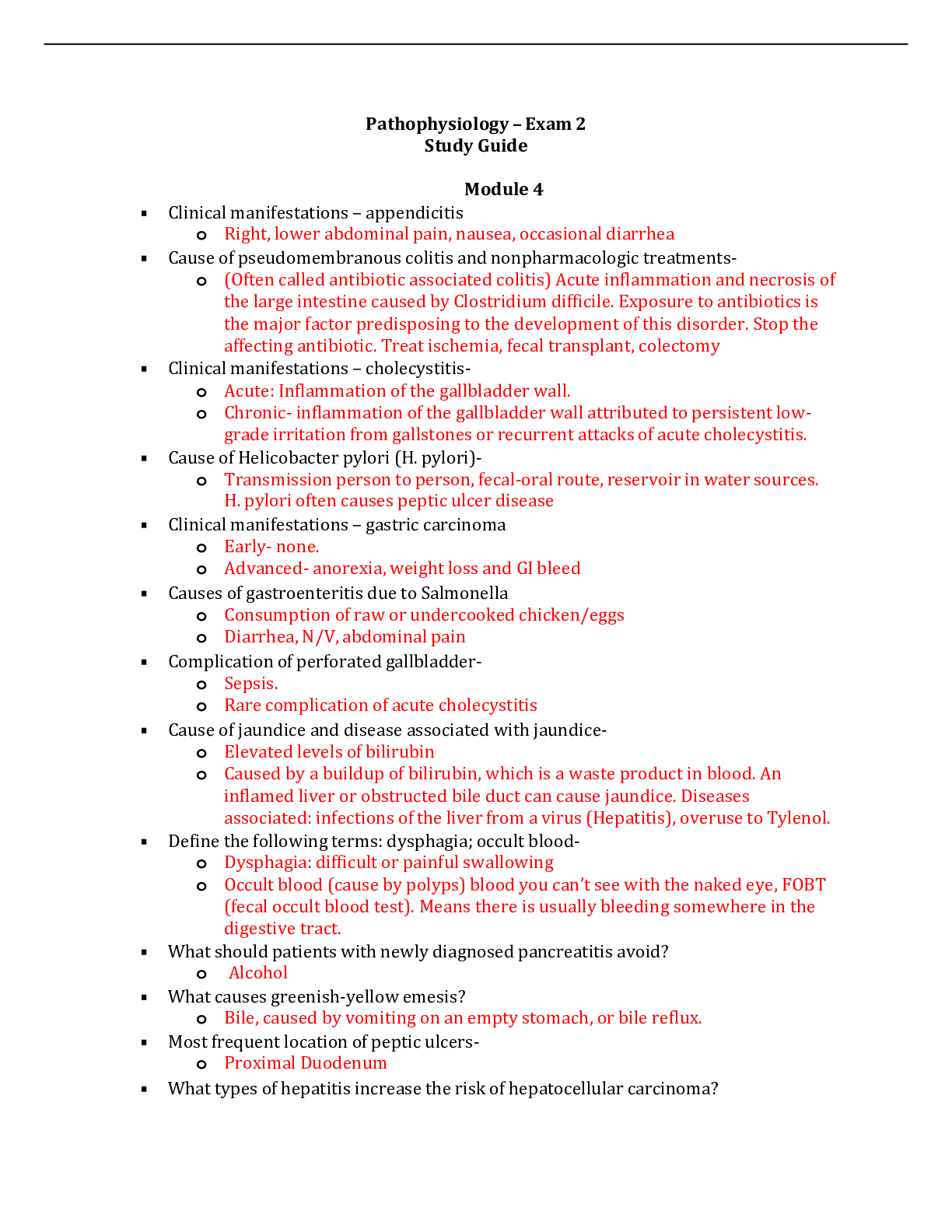
Buy this document to get the full access instantly
Instant Download Access after purchase
Add to cartInstant download
Reviews( 0 )
Document information
Connected school, study & course
About the document
Uploaded On
Feb 14, 2021
Number of pages
9
Written in
Additional information
This document has been written for:
Uploaded
Feb 14, 2021
Downloads
0
Views
74


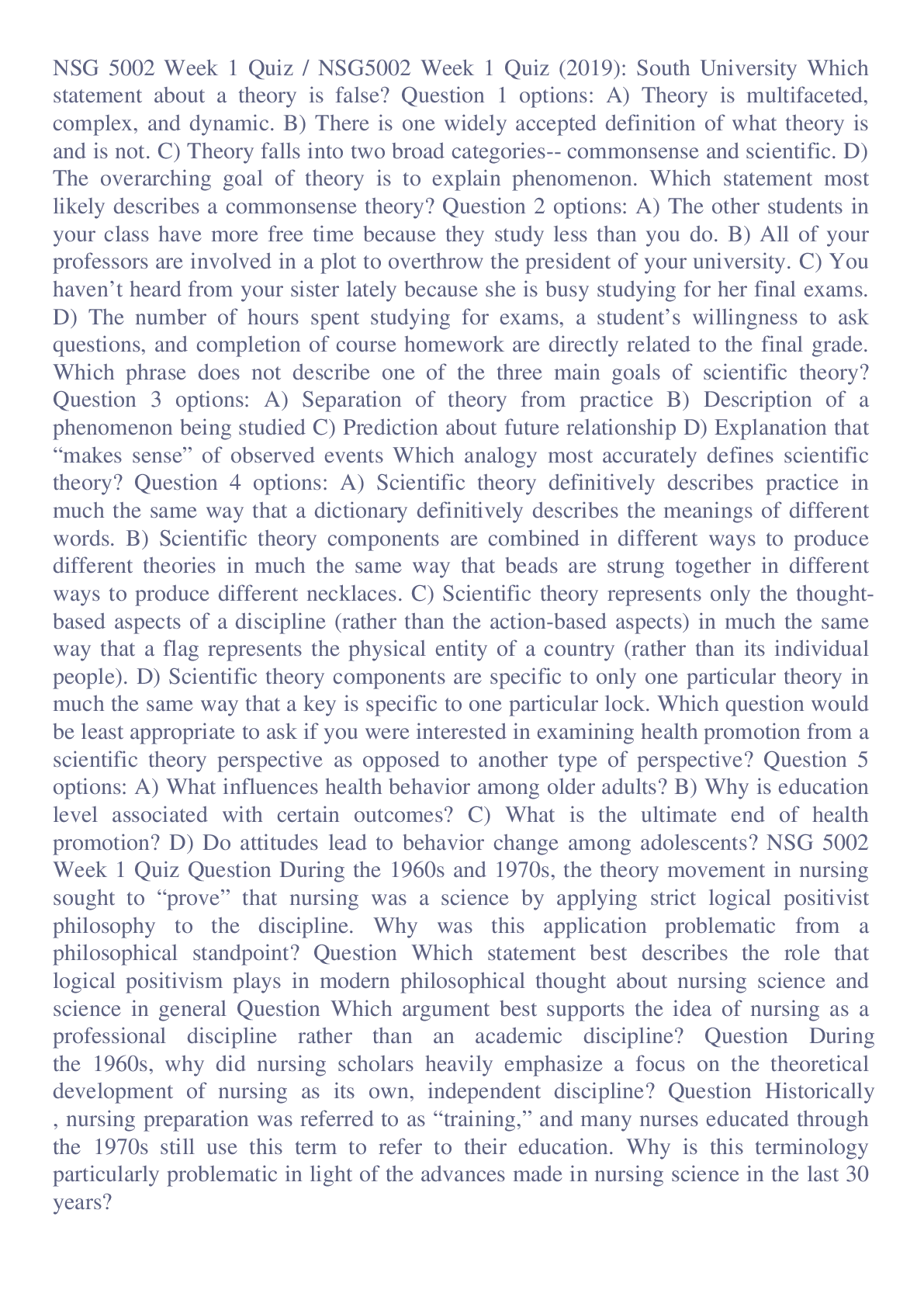


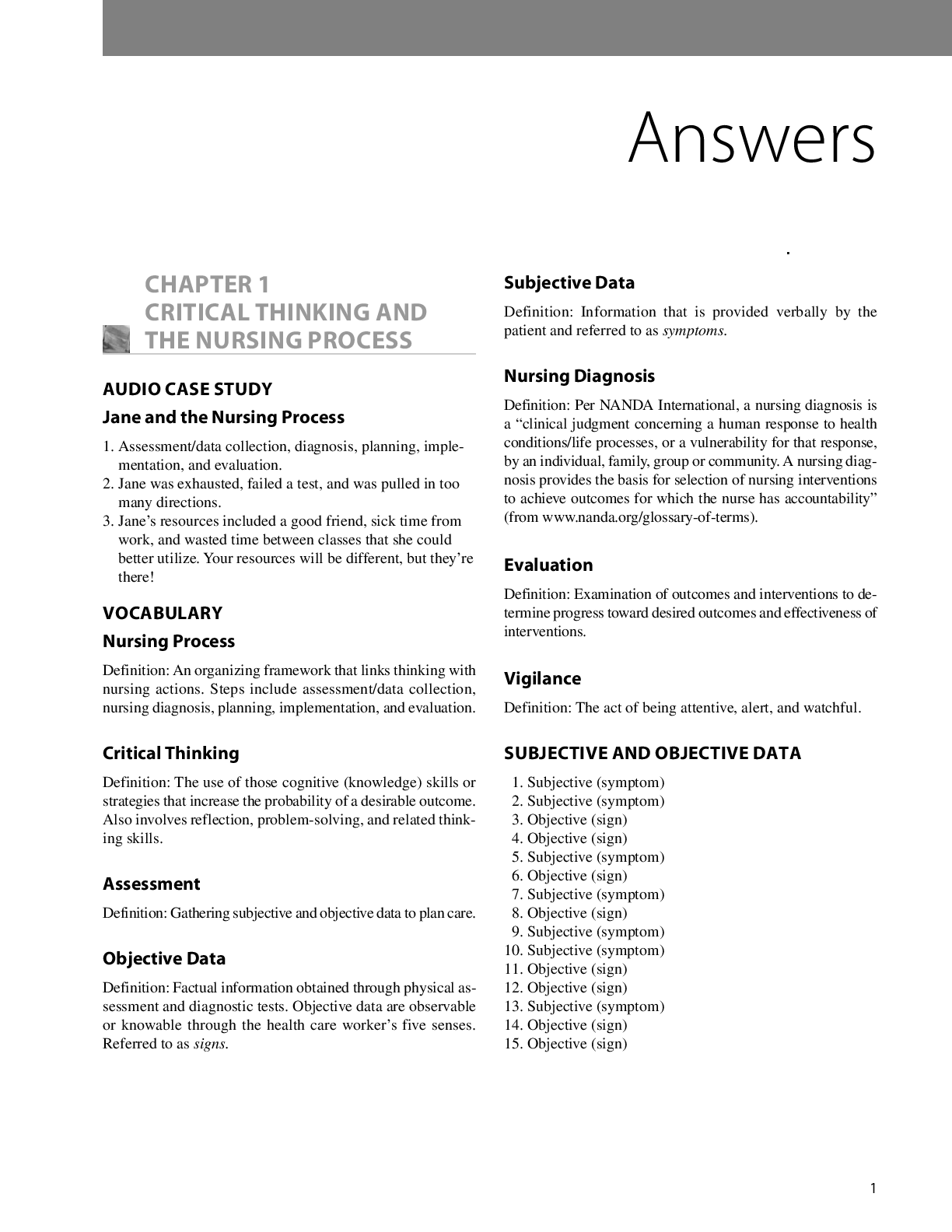


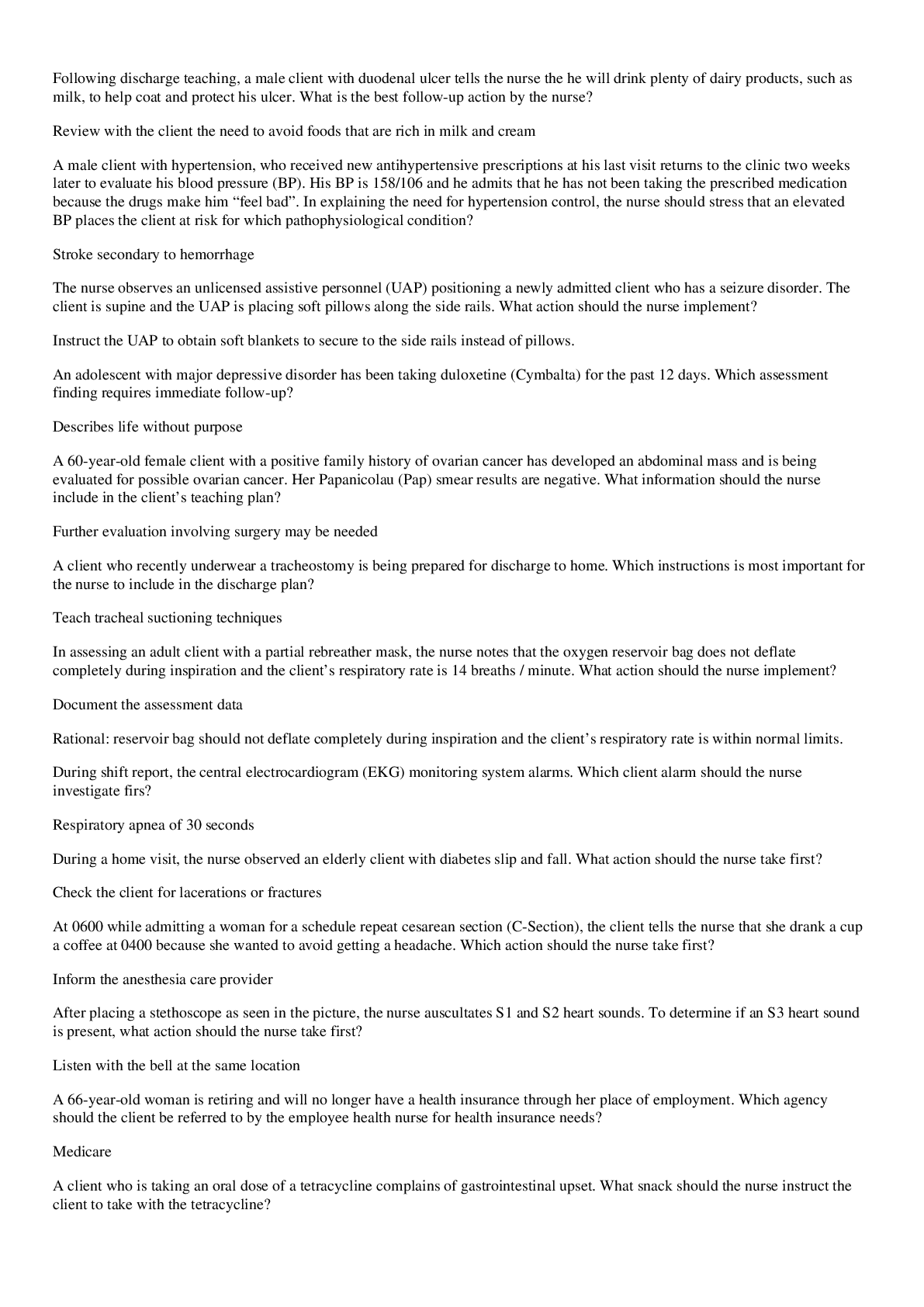
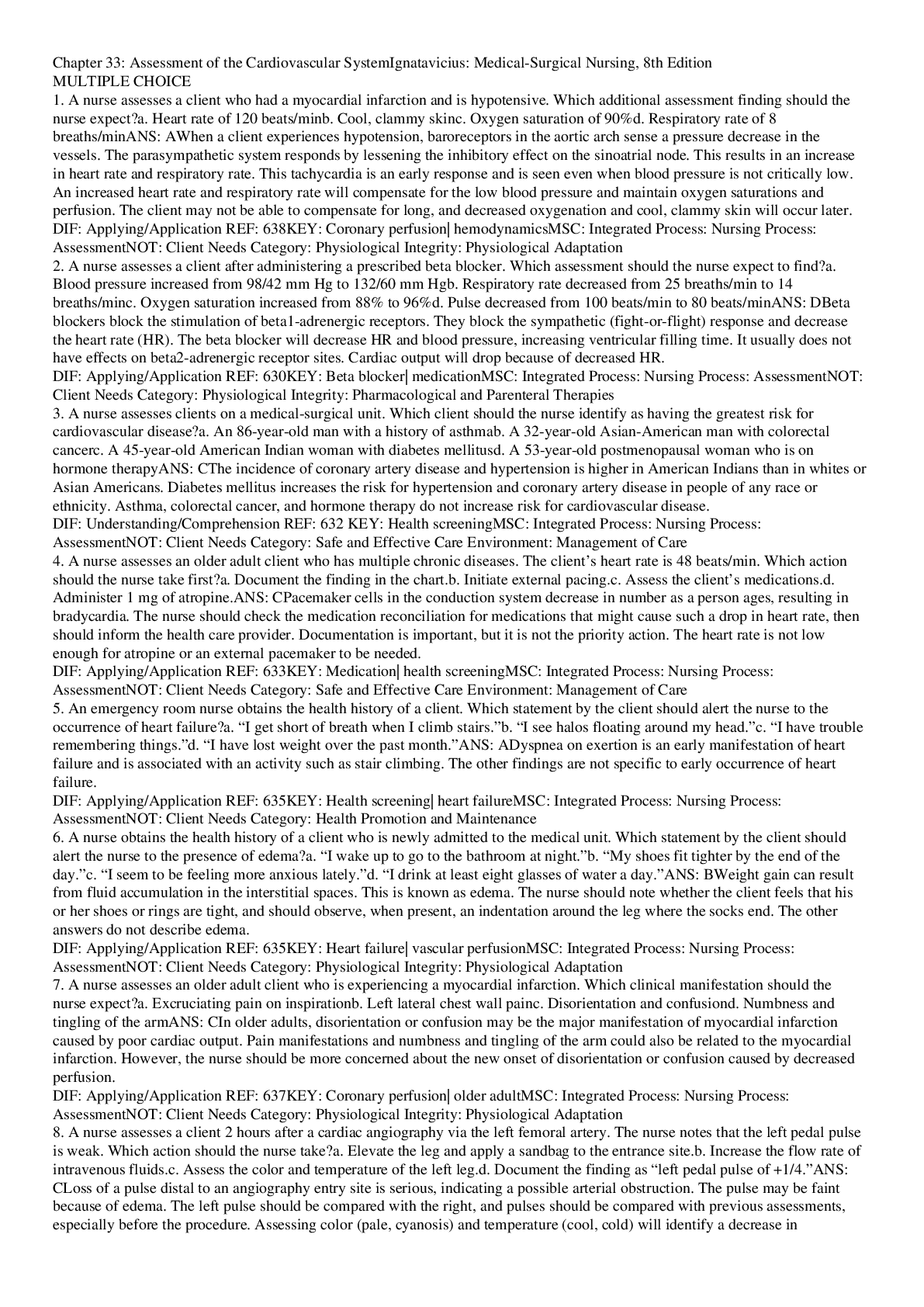

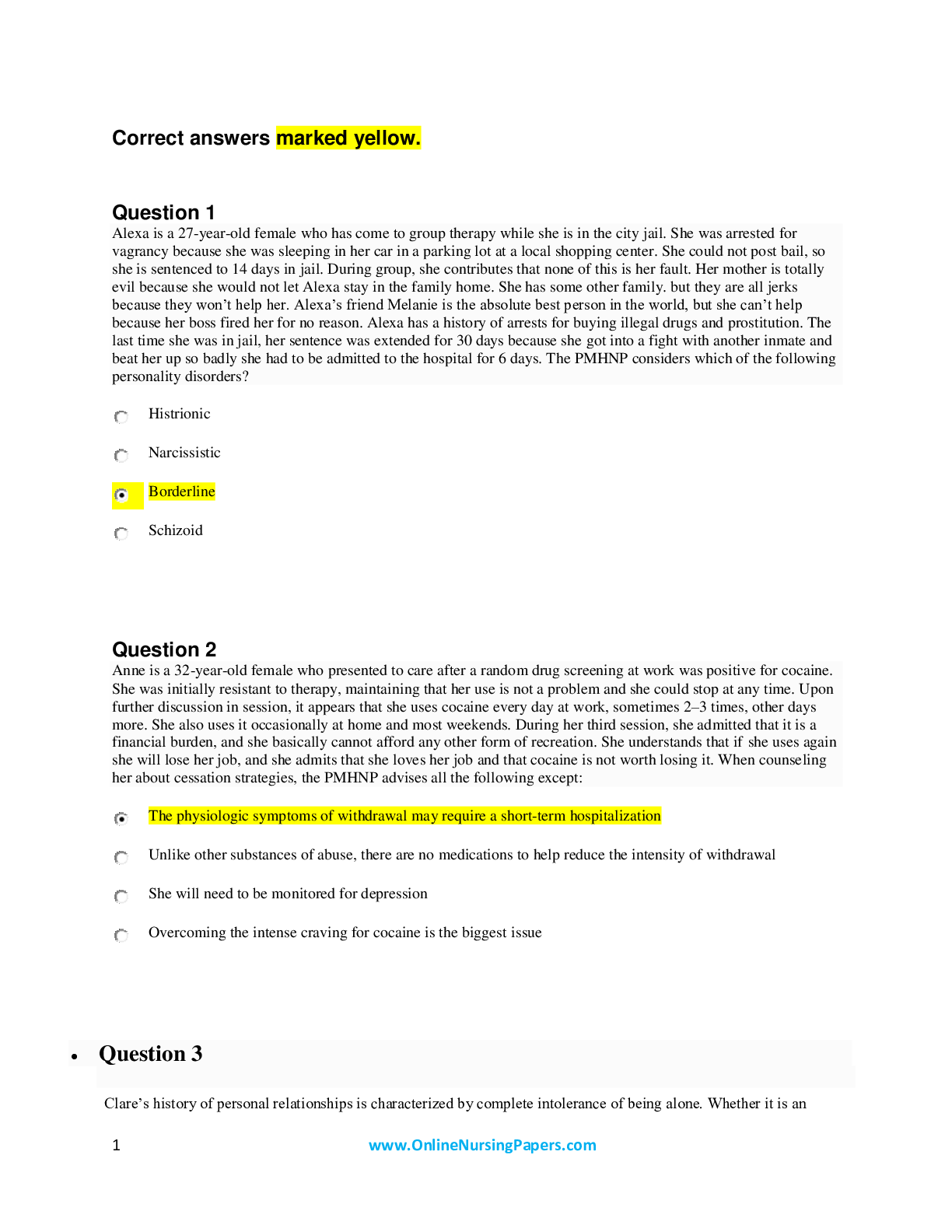
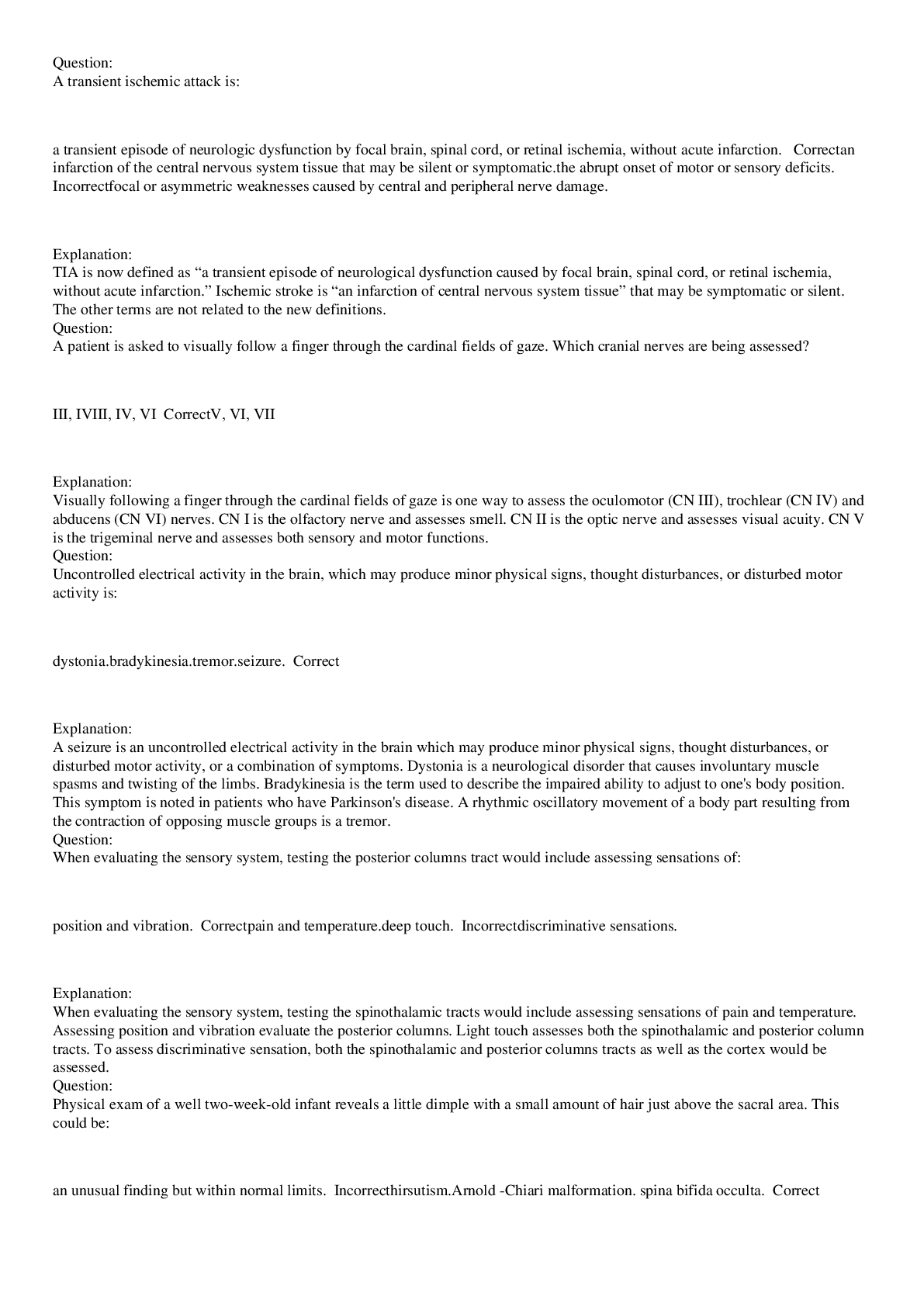
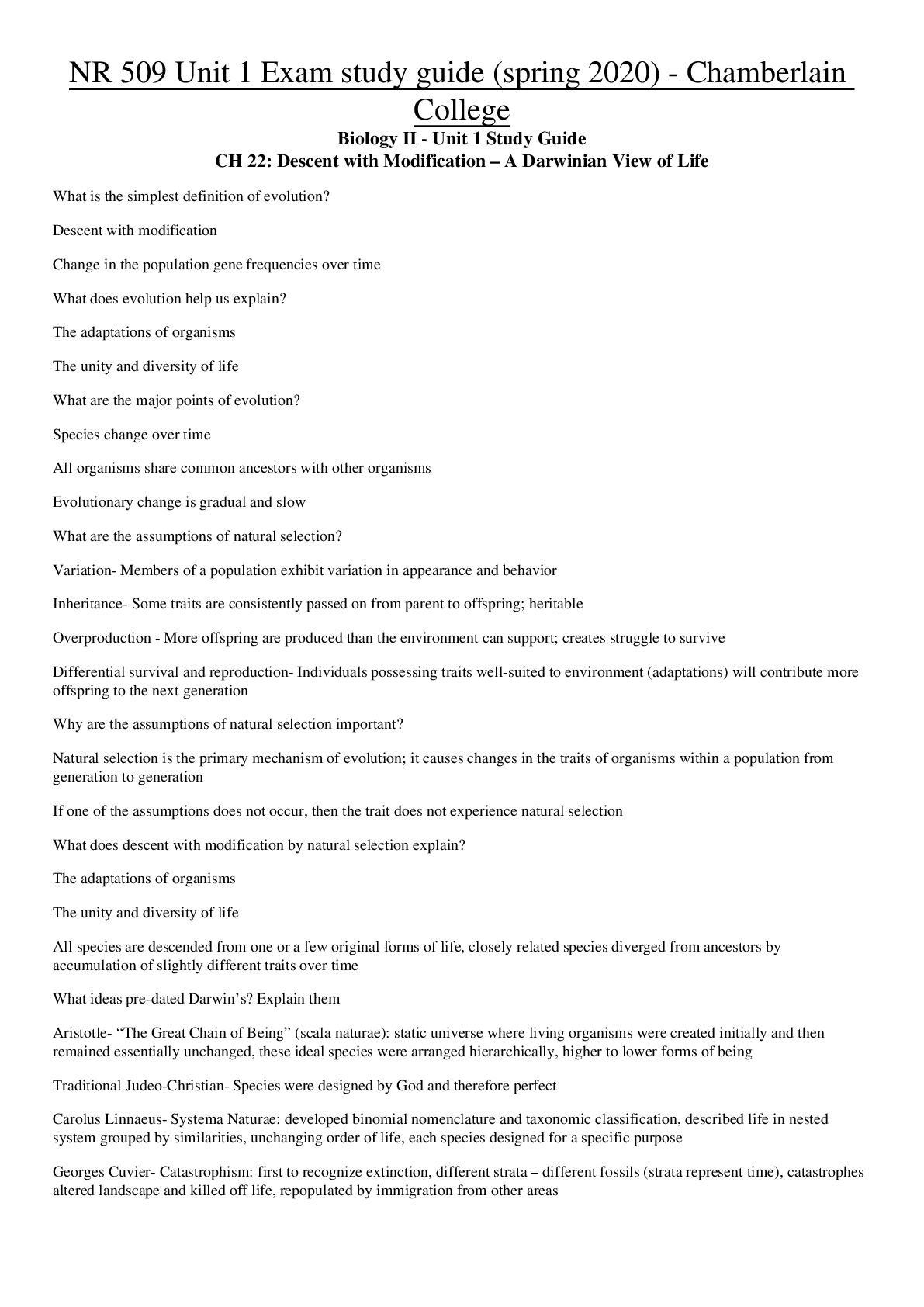
.png)
